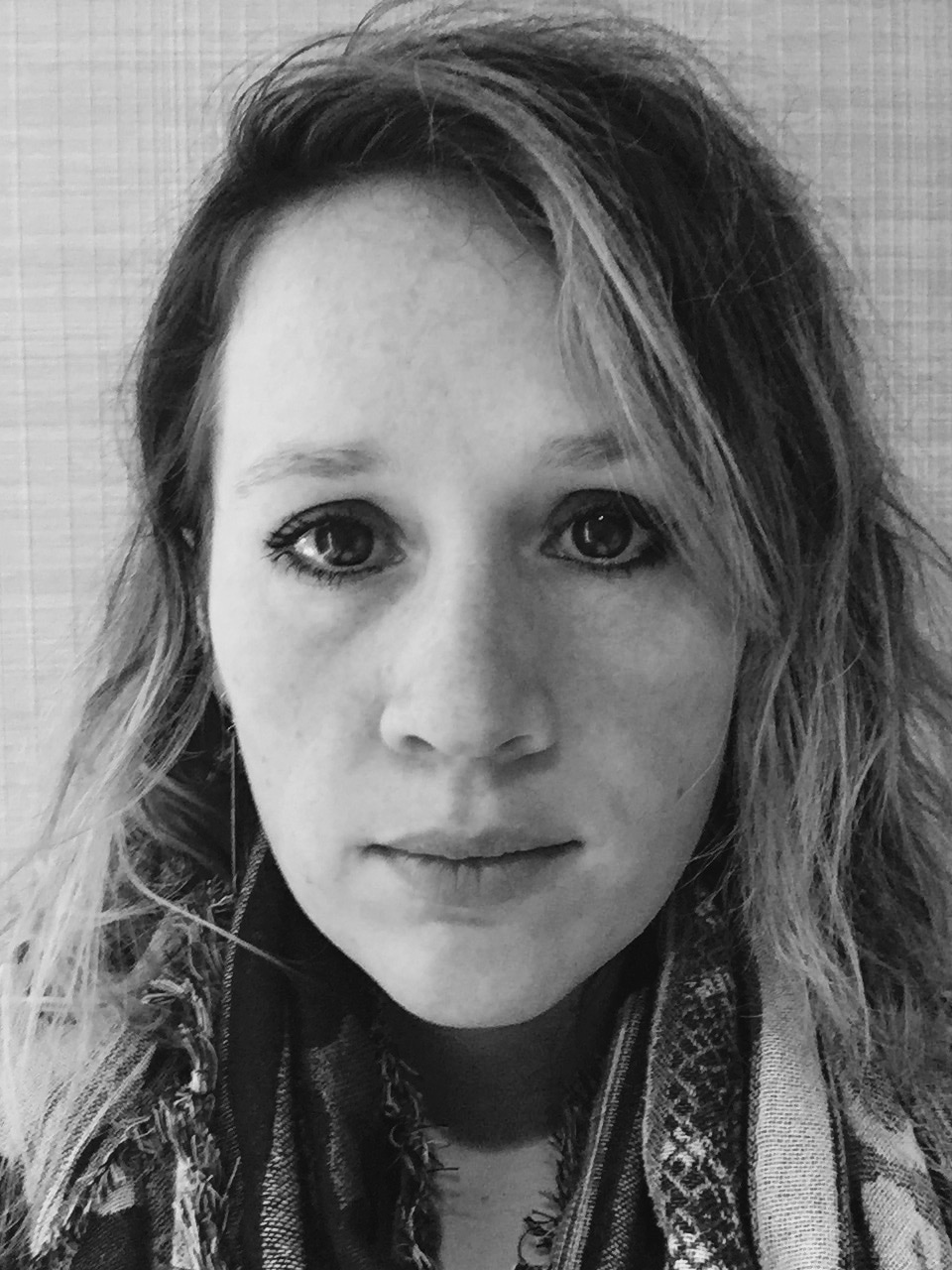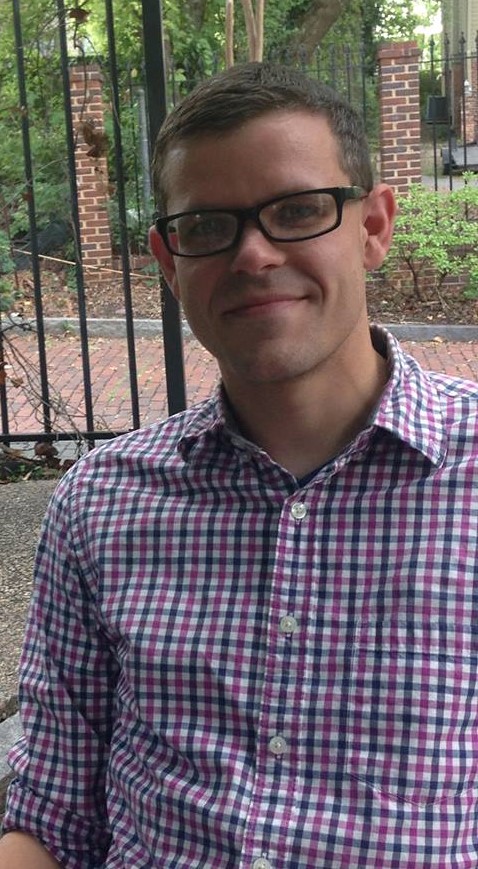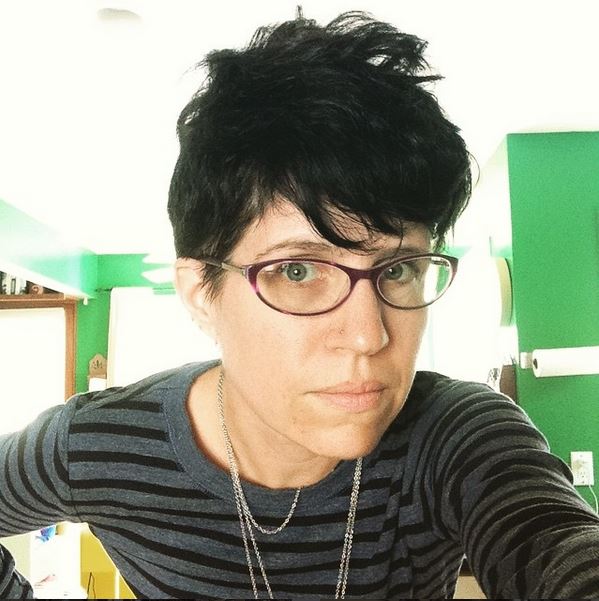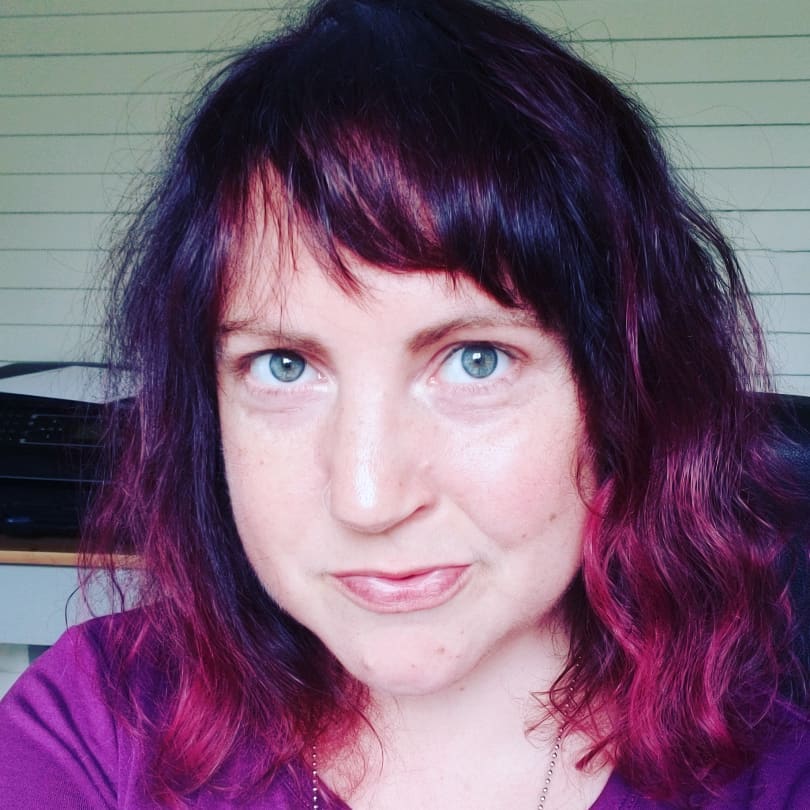 Evan Lavender-Smith’s writing has recently been published by Arts & Letters, BOMB, Colorado Review, Denver Quarterly, Egress, Harvard Review, Hobart, New England Review, The Southern Review, The White Review and many other magazines and websites. He is the author of Avatar (Six Gallery Press, 2011) and From Old Notebooks (Dzanc Books, 2013), the founding editor of Noemi Press, and an assistant professor in the MFA program at Virginia Tech. Visit him at el-s.net.
Evan Lavender-Smith’s writing has recently been published by Arts & Letters, BOMB, Colorado Review, Denver Quarterly, Egress, Harvard Review, Hobart, New England Review, The Southern Review, The White Review and many other magazines and websites. He is the author of Avatar (Six Gallery Press, 2011) and From Old Notebooks (Dzanc Books, 2013), the founding editor of Noemi Press, and an assistant professor in the MFA program at Virginia Tech. Visit him at el-s.net.
His story, "Last Thing," appeared in Issue Ninety-Six of The Collagist.
Here, Evan Lavender-Smith talks with interviewer William Hoffacker about studying Spanish, alternating points of view, and writing about thinking.
Please tell us about the origins of your story “Last Thing.” What inspired you to start writing the first draft?
“Last Thing” was a fairly accurate description of the beginning of a trip to Peru I took with my wife and daughter. I was convinced—as I’m often convinced when getting on an airplane—that the airplane was going to fall apart upon takeoff. I believe I started writing “Last Thing” shortly after it didn’t.
What made you want to write a story that uses Spanish almost as much as English? What was that process like for you?
Sometimes my Spanish is OK, sometimes I don’t seem to have much Spanish at all. I’ll spend several months working hard on my Spanish, and I’ll feel I’m real making progress toward fluency, and then I’ll stop for some reason, maybe because I have to start teaching again or because I feel I have to spend all free my time working on an essay or story or playing the piano. My Spanish was probably at its all-time best at the moment in time when “Last Thing” takes place; I’d recently come off of doing this herculean translation of an epic poem by Chilean poet Pablo de Rokha, a project that took many months to complete. I guess it just felt like Spanish was suddenly a tool I had at my disposal, even though that tool wasn’t especially sharp. But I imagine that was part of the pleasure I took in employing it, leaning on my interminable poverty with Spanish in order to cast myself as the linguistic buffoon that I sometimes am. I remember early on trying to make the Spanish in “Last Thing” really good, really perfect—there were all these Spanish-English dictionaries and grammars littered around my writing space—and then at some point thinking to myself, “Wait a minute, your Spanish totally blows, Evan, so why are you trying to make it seem like you’re so good at it?” So then I went back through and tried to capture some of the malapropisms and hiccups and inanities that occur whenever I attempt to think or speak in Spanish. The other pleasure I took in using Spanish was the way it seemed to allow me to sort of expand the formal territory of the sentence, so many translated qualifications and clauses all over the place leading to new and weird possibilities for the sentence. I think my favorite sentence in “Last Thing,” if I’m remembering it correctly, is this one: “No: no.” The first “no” is an English “no”; the second “no” is a translation into Spanish of the English “no,” which is also the word “no.” I don’t imagine I’d ever have an opportunity to write a sentence like that—that is, one that actually makes sense according to the formal rules established by the writing at hand—in any other context. That was very exciting to me.
Large portions of this story are the protagonist’s stream of consciousness, first-person pronouns sometimes taking over as he thinks to himself. Would you talk about how you represent such free association in writing? Do you attempt to write as freely as the character is thinking in order to make it seem authentic? And how much do you revise parts like these?
In “Last Thing” and a few other things I’ve written, the thinking mind seems to alternately want to inhabit the role of subject, of object, of something in between subject and object, even of some sort of subject-object whole. I can be “I,” but I can also be “you”; I can also be a person named “Evan”; I can also be all three of these things at once. When I think, often I find myself thinking about myself in the first person (e.g. “I need a drink right now”), and often I find myself thinking about myself in the second person (e.g. “You really, really need to go pour yourself a drink right now”), and often I find myself thinking in the third person (e.g. “If Evan doesn’t go pour himself a drink right now, who knows what might happen?”), and often I find myself thinking in a variable POV (“You need a drink! I should really go pour myself one right now or else Evan might lose his shit!”). In these few things I’ve written that play around with this bizarre confluence or alternation of various perspectival modes of thought, I seem to find myself drawn to the possibilities of jamming them all up against one another in order to create, as I’ll refer it when describing such a thing to my students, a “crowding effect.” We encounter such crowding effects in other guises—ones that aren’t as tied to thinking, often—in the writing of people who seem dissatisfied with that more streamlined uniformity of expression that’s most often prized in writing, as well as taught to young writers, which I think is what’s most often actually being signified when creative writing teachers say that it’s important to “Find your voice.” “Find your voice” reads to me as something more along the lines of, “Write uniformly. And don’t fuck around with a whole bunch of different modes of language, especially in the same poem/essay/story/book.” Pound said “Make it new,” and I agree that making it new is important, even all these years on; but, in the face of what I perceive to be so much internal formal consistency among all the writing that most gets read these days—even among things that might indeed feel “new”—I guess I’d be eager to amend Pound’s statement to read, “Make it new—but also make it formally dynamic.”
As far as authenticity is concerned, I’m not sure. I don’t really believe that mere language is commensurate to, or capable of somehow fully or genuinely representing, thought. My primary fidelity as a writer writing about thinking isn’t necessarily to the accurate portrayal of thought by way of words, but rather to the invention of figures for the representation of thought within the context of all the pressures associated with a uniquely sovereign and uniquely coherent aesthetic object—a specific essay, story, poem, book, etc. I don’t really believe that thought can be directly or authentically represented in art. We either have to come up with formal analogies to thought that, at best, remind us of the structures of thought, or, as most writers do, we just try to not really give much of a shit about thought and instead write mainly about “events,” about people actually out in the world doing things with their bodies, etc. The problem, as I see it, is that an appreciation of thought-as-such is so far beyond the ability of our immediate or even our sustained comprehension that it’s almost as if we have to just either give up on it entirely, or, if we’re ambitious enough to make a go at it, the best we can do is create a figure for thought, an allegory or metaphor or something. I don’t actually think the way I think in “Last Things,” just as an IRL Stephen or Bloom or Molly wouldn’t think the way Stephen or Bloom or Molly thinks in Ulysses. The point I guess I’m trying to make is that, for me, the complexity of thought seems to exceed the limit of writing’s potential complexity. So as writers intent on engaging with thought in our writing, we’re put in the position of having to act like bricoleurs, like people scrambling around working with little scraps of whatever’s within reach, working with what little is available to us in language toward the end of just barely illuminating the incomprehensibly vast complexity of the thinking mind.
And yes, I revise like a maniac. I spend most of my time writing revising.
What writing project(s) are you working on now?
I’m just now completing a collection of essays, which includes “Last Thing” as part of a much longer thing called “Going to Peru”; and, after many botched attempts at trying to nail down a structure I feel OK with, I’m finally completing a collection of stories.
What have you read recently that you want to recommend?
I liked Matthew Vollmer’s Permanent Exhibit a lot. It’s a collection of lyric, associative meditations on a range of subjects. I interviewed him about it here. Now that the academic winter break is about to hit, I’m planning to reread a bunch of books in preparation for a class I’m teaching next semester on shorter debut novels, including Satantango by Laszlo Krasznahorkai (maybe my favorite living writer), Spurious by Lars Iyer (probably the funniest living writer I know of), Event Factory by Renee Gladman (not sure if that’s actually her first “novel,” though), Florida by Christine Schutt, Faces in the Crowd by Valeria Luiselli (whose little book of essays, Sidewalks, is very good), Kingdom Cons by Yuri Herrera (whose book Signs Preceding the End of the World is also very good), and several other books I can’t name because I’m not using the computer on which I have my working syllabus stored and also I have internet-blocking software turned on right now. Which reminds me that Brian Blanchfield’s Proxies is surely one of the greatest works of nonfiction written in this century; I’m reminded of it because the book’s self-imposed constraint—which is actually less interesting to me than the sheer beauty of the writing—is that the author doesn’t allow himself to look at the internet or any secondary material while composing the essays. I’d also like to recommend John Keene’s recent book, Counternarratives, which to my mind is a paragon of the formally dynamic short story collection, an ideal counterexample to the collection in which “Find your voice” is a guiding principle.









